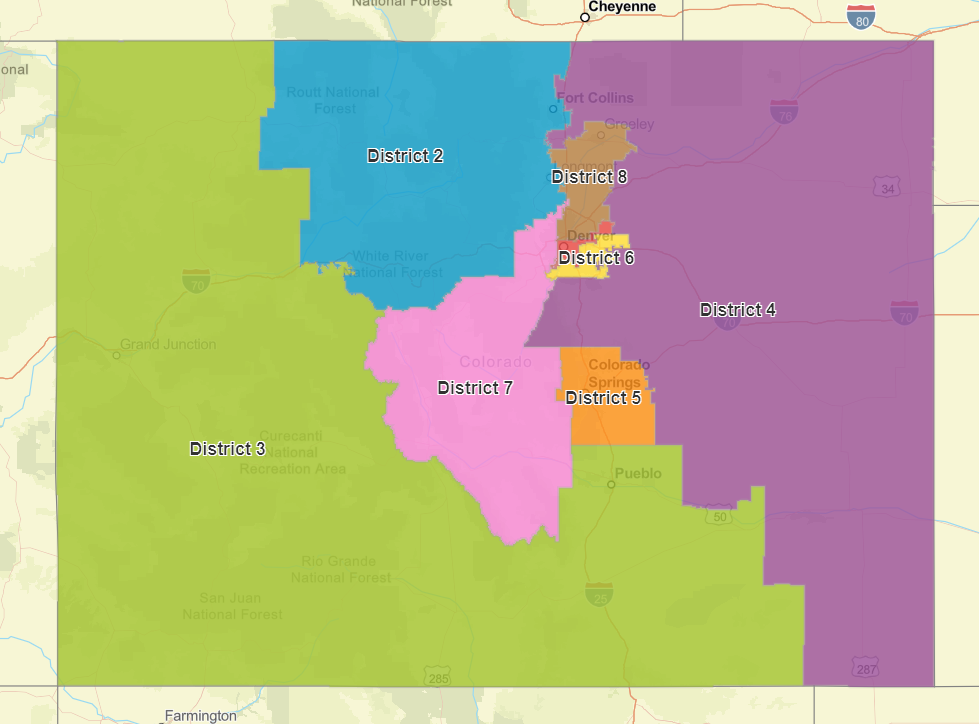
Colorado’s supreme court justices have agreed unanimously to let stand the map approved by the state’s new Independent Congressional Redistricting Commission.
“This year has marked a watershed for congressional redistricting in Colorado. For the first time, the state’s congressional district map is not the product of politics or litigation,” Justice Monica Marquez wrote in her opinion for the court. “It is instead the product of public input, transparent deliberation, and compromise among twelve ordinary voters representing the diversity of our state.”
The new map creates four districts that are likely to be won by Democrats, three that lean heavily Republican, and one district — the new eighth — that is a toss-up between the two parties.
The boundaries also make it likely that all of the state’s current members of Congress will be able to hold onto their seats.
A number of Latino advocacy groups had objected to the map; they argued that by making the new CO-8 both the state’s most competitive district, and its most heavily Latino, it dilutes that community’s ability to elect candidates of their choice.
The state’s redistricting rules say maps can’t be drawn with the purpose of “Denying or abridging the right of any citizen to vote on account of that person's race or membership in a language minority group, including diluting the impact of that racial or language minority group's electoral influence.”
The court found that that language merely reinforces the protections for minority communities found in the federal Voting Rights Act, and that while the commission could have done more to consider race in drawing its districts, it wasn’t required to.
According to David Wasserman at the Cook Political Report, Colorado is the seventh state in the country to complete its congressional redistricting process. This step potentially clears the way for more candidates to declare for next year's congressional races, now that district boundaries are officially set.
The state supreme court is still considering new state House and Senate maps, which were drawn by a separate commission. Those have been met with significantly less opposition.









